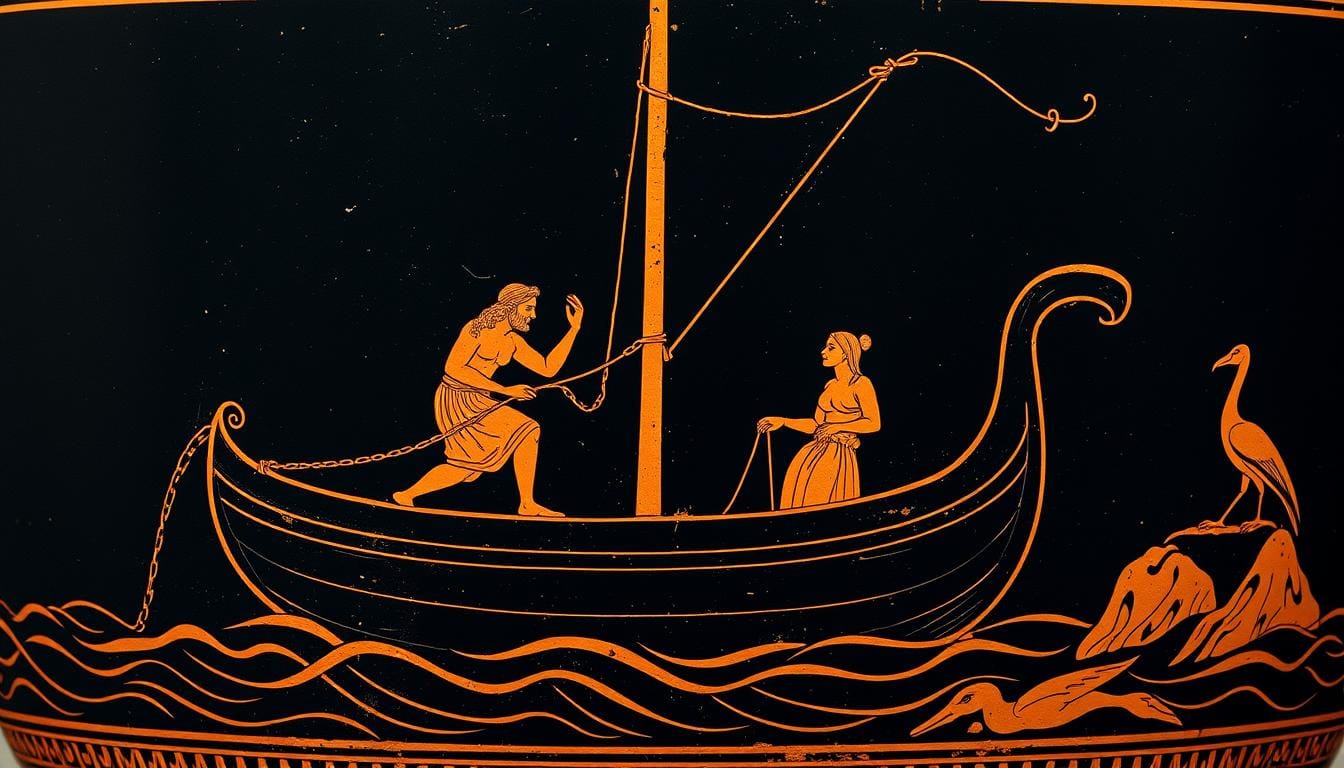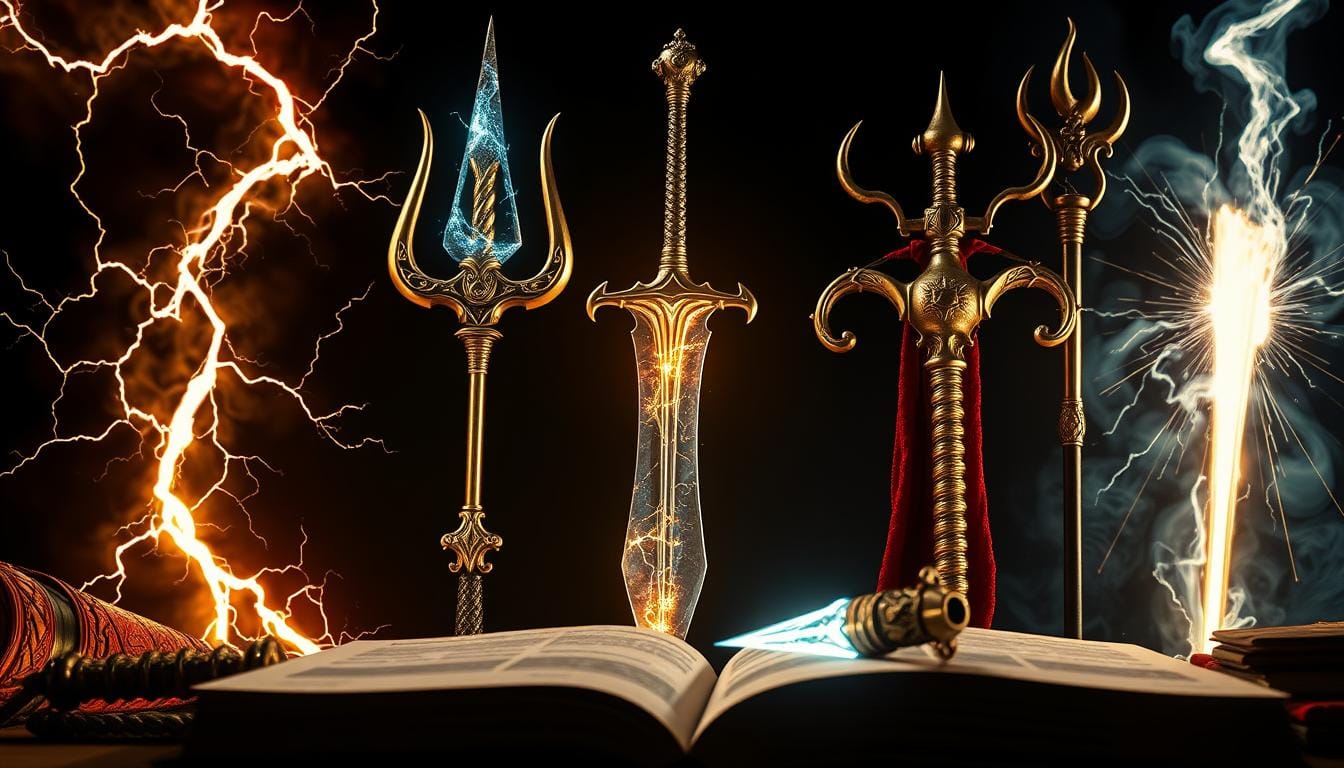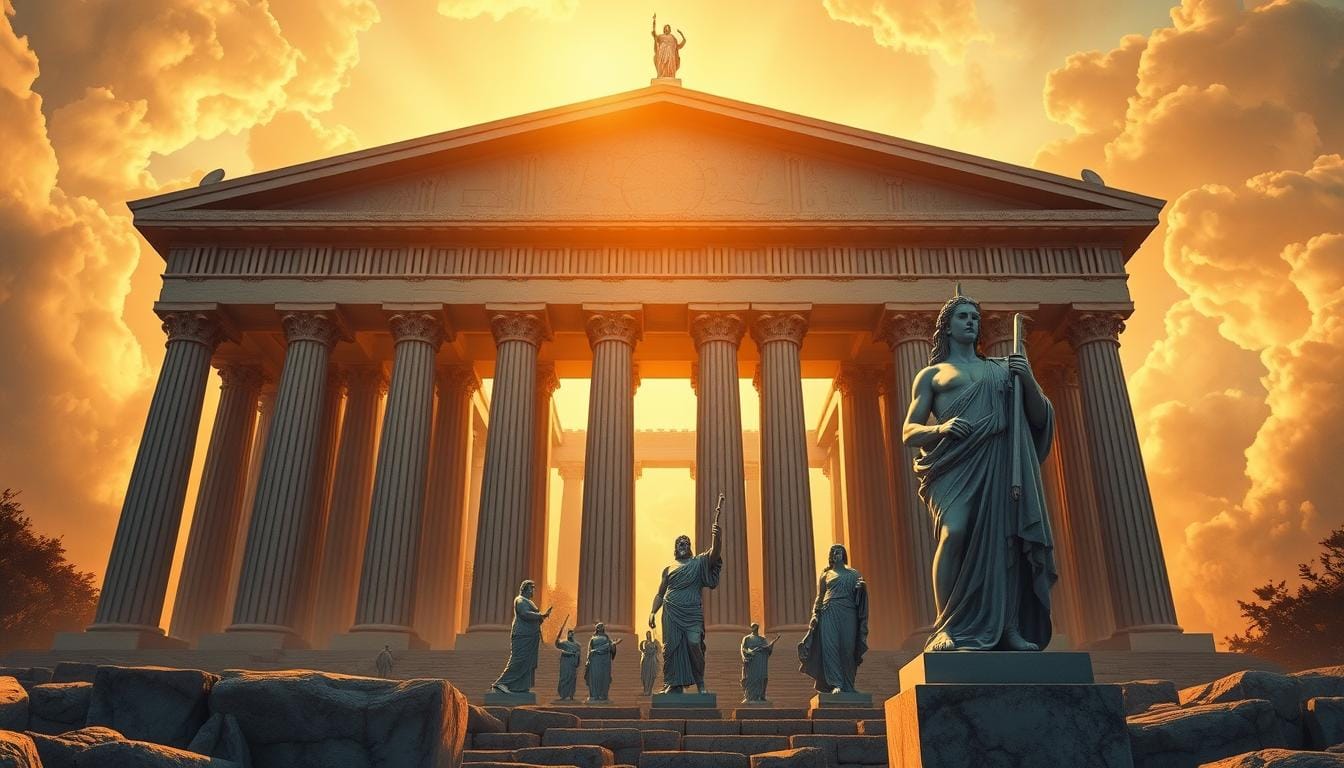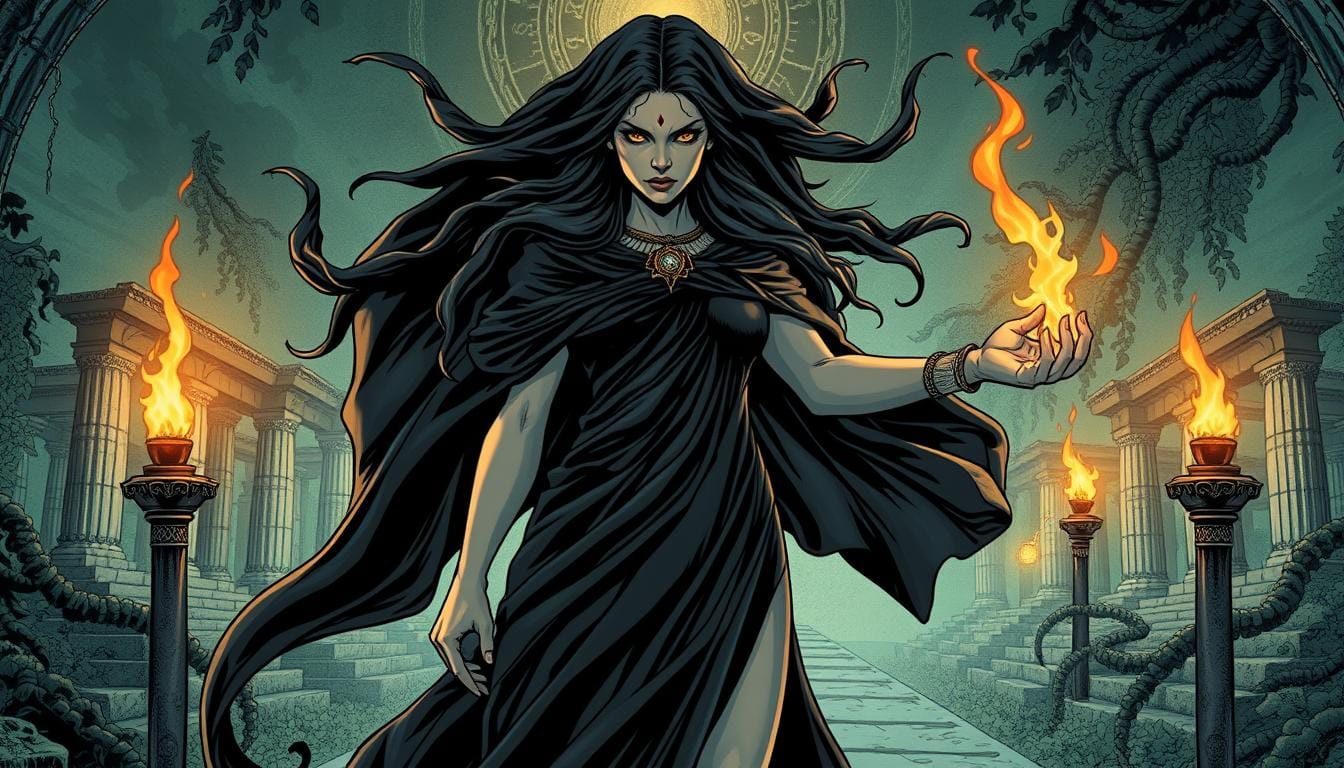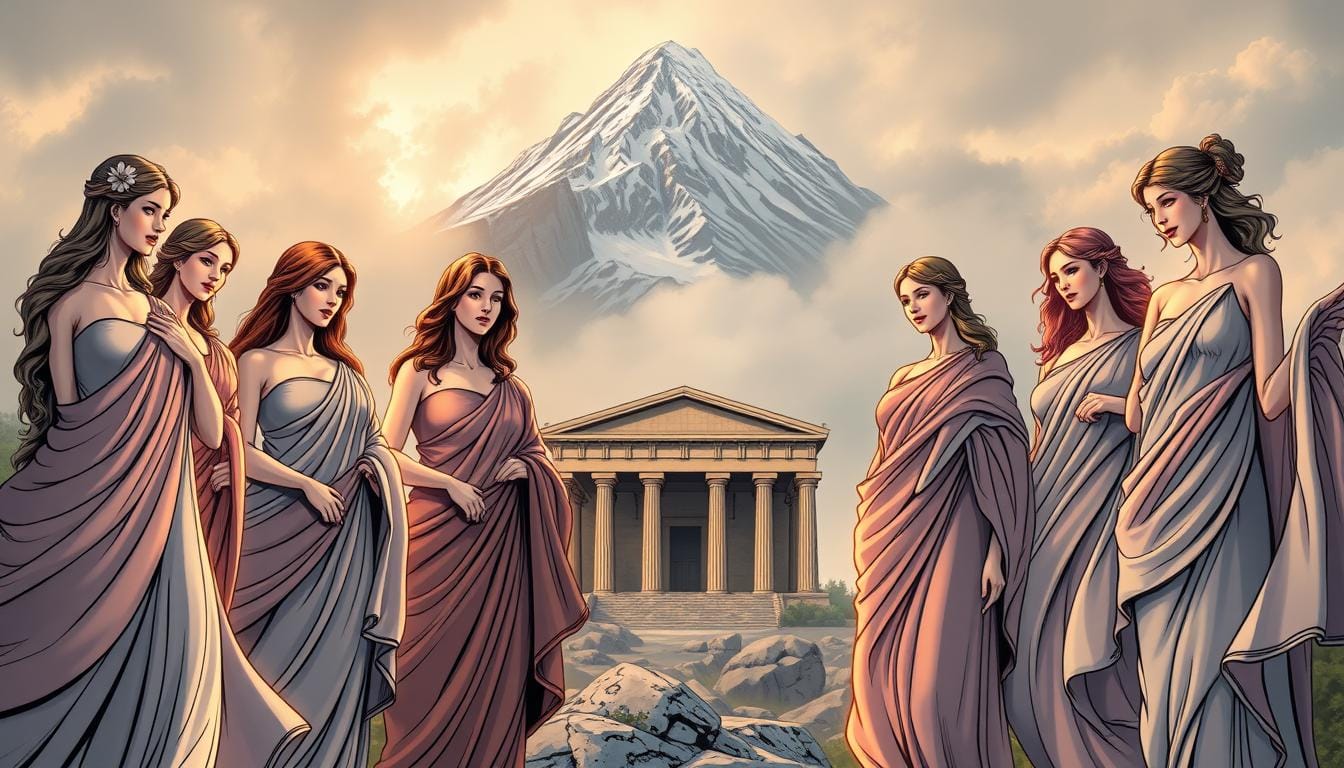Before light, time, or order existed, there was only Chaos. This primordial state—formless, boundless, and infinite—appears across human cultures as the mysterious beginning from which all creation emerged. From ancient Greek cosmogonies to quantum physics, the concept of chaos represents both the terrifying abyss and the infinite potential that precedes form and structure. This tension between destruction and creation, void and possibility, continues to fascinate us across millennia, disciplines, and civilizations.
Understanding Chaos
Chaos (Greek: χάος, kháos) – Originally referring not to disorder but to the “yawning void” or “gaping emptiness” that existed before creation. The word derives from the Greek verb ‘chaino’ meaning “to gape, yawn wide open.”
When we speak of chaos today, we often mean disorder or confusion. However, in ancient cosmologies, Chaos represented something more profound—the primordial void from which all existence emerged. This original meaning carries none of our modern negative connotations. Instead, it signifies unlimited potential and the raw material of creation itself.
As we explore chaos across cultures and disciplines, we’ll discover how this concept serves as both the beginning and the underlying structure of reality itself—a paradox that continues to challenge and inspire our understanding of existence.
Chaos in Ancient Cosmologies
Across diverse cultures, the concept of chaos as a primordial state appears with remarkable consistency. Though details vary, the essential pattern remains: before order, there existed a formless state of potential from which the cosmos emerged.
Greek Chaos
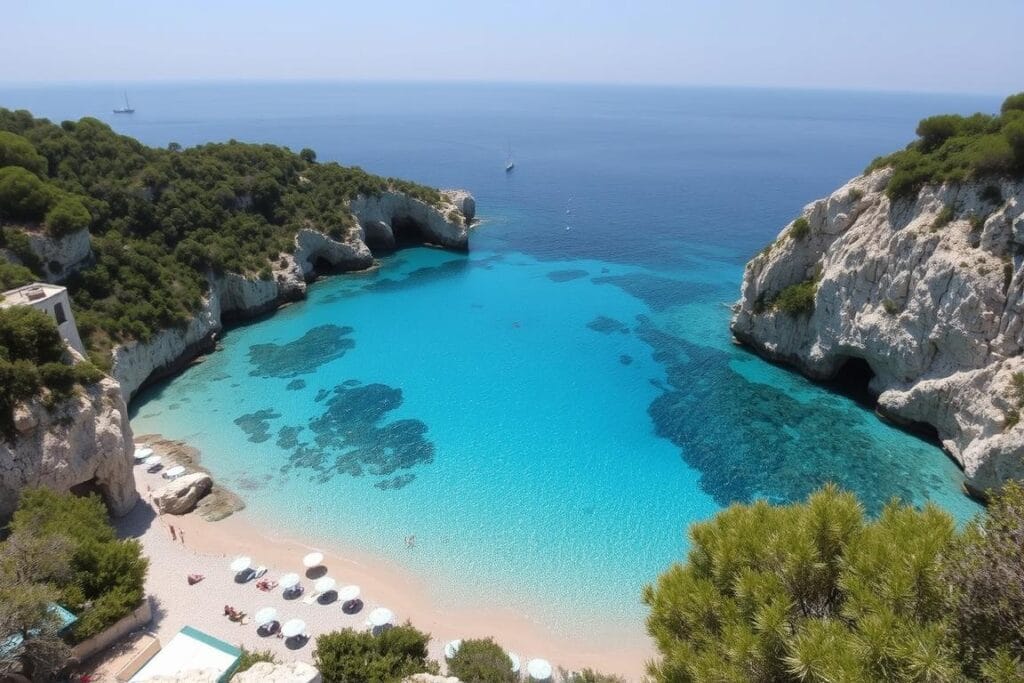
In Hesiod’s Theogony (c. 700 BCE), Chaos is the first entity to exist: “Verily at first Chaos came to be, but next wide-bosomed Earth…” This Chaos was not disorder but rather a gaping void—empty space that contained all potential. From Chaos emerged Gaia (Earth), Tartarus (Underworld), Eros (Desire), Erebus (Darkness), and Nyx (Night).
Norse Ginnungagap

Norse mythology describes Ginnungagap—”the yawning void”—as existing before creation. The Prose Edda tells us: “In the beginning, there was nothing except for the void of Ginnungagap.” This void existed between Muspelheim (realm of fire) and Niflheim (realm of ice). Where these extremes met in Ginnungagap, the first being, Ymir, formed from melting ice.
Egyptian Nun

Egyptian creation myths speak of Nun, the primordial waters of chaos. Before creation, only these dark, directionless waters existed. From Nun emerged the benben (primordial mound) upon which the creator deity (Atum or Ra) appeared. The Pyramid Texts state: “O Atum, when you came into being you rose up as a high hill, you shone as the benben stone in the temple of the phoenix.“
Babylonian Tiamat
In the Babylonian creation epic Enuma Elish, chaos is personified as Tiamat, the primordial goddess of salt water. The text begins: “When on high the heaven had not been named, firm ground below had not been called by name, when primordial Apsu, their begetter, and Mummu-Tiamat, she who bore them all, their waters mingled as a single body…” Tiamat represents the chaotic waters that must be conquered to establish cosmic order.

Chinese Hundun

Chinese mythology refers to Hundun (混沌), a primordial entity representing chaos. In the Zhuangzi, Hundun is described as a faceless being who dies after the well-meaning gods of the north and south seas drill seven holes in him (representing the imposition of order). This poignant myth suggests that pure chaos cannot survive the imposition of structure—yet structure cannot exist without chaos as its foundation.
“In the beginning, there was only darkness and formless void.” — Anonymous
These diverse myths share a common understanding: creation requires a primordial state of unlimited potential. Chaos is not merely absence but pregnant possibility—the necessary precondition for existence itself. This understanding transcends cultural boundaries, suggesting a universal human intuition about the nature of reality and creation.
From Void to Vortex: Chaos in Physics
The ancient intuition of chaos as both void and potential finds remarkable parallels in modern physics. What mythmakers intuited through metaphor, scientists now explore through mathematics and observation.

Quantum Vacuum and Fluctuations
In quantum physics, the vacuum is not truly empty but seethes with activity. Quantum fluctuations—temporary changes in the amount of energy in a point in space—constantly create and annihilate virtual particles. This “quantum foam” bears striking resemblance to the primordial chaos of mythology: a void that is paradoxically full of potential.
Physicist Lawrence Krauss explains: “Empty space is a boiling, bubbling brew of virtual particles that pop in and out of existence in a time scale so short that you can’t even measure them.” This description would not seem out of place in Hesiod’s Theogony or the Egyptian creation myths.
The Big Bang and Cosmic Inflation
The Big Bang theory proposes that our universe began from a singularity—a point of infinite density and temperature. Before this event, the concepts of space and time as we understand them did not exist. The initial state of the universe was one of extreme disorder and energy—chaos in both the ancient and modern senses.
Cosmic inflation theory suggests that the early universe expanded exponentially in the first fraction of a second after the Big Bang. This rapid expansion transformed quantum fluctuations in the vacuum into the large-scale structure of the universe we observe today—galaxies, clusters, and superclusters.

Chaos Theory and Deterministic Chaos
Modern chaos theory studies how deterministic systems can produce unpredictable results. The famous “butterfly effect”—where tiny initial differences lead to vastly different outcomes—demonstrates how order and chaos are intertwined. In chaotic systems, apparent randomness emerges from deterministic rules, just as in creation myths where order emerges from primordial chaos.

Comparing Mythological and Scientific Chaos
- Both view chaos as a precondition for order, not its opposite
- Both recognize that structure emerges from unstructured potential
- Both acknowledge the paradoxical nature of “empty” space
- Both see creation as a process of differentiation from homogeneity
- Both understand chaos as containing all possibilities simultaneously
The parallels between ancient cosmologies and modern physics suggest that human intuition about the nature of reality has remained remarkably consistent. What changes is our language and methodology for exploring these fundamental questions about existence.
The Dual Nature: Chaos as Destroyer and Creator
Throughout human history, chaos has maintained a dual symbolic identity—representing both destructive disorder and creative potential. This paradox appears consistently across cultures and disciplines.
The Destructive Aspect

In its destructive aspect, chaos represents:
- The dissolution of boundaries and structures
- The return to undifferentiated state
- The overwhelming of rational order by irrational forces
- The threat of entropy and decay
This aspect appears in flood myths worldwide, where chaotic waters destroy the existing order. It manifests in apocalyptic visions where the cosmos returns to chaos. The Norse Ragnarök, the Hindu concept of pralaya (dissolution), and the Biblical apocalypse all depict chaos reclaiming creation.
The Creative Aspect

In its creative aspect, chaos represents:
- The womb of all potential forms
- The necessary condition for novelty and innovation
- The source of diversity and complexity
- The wellspring of creative inspiration
This aspect appears in creation myths where gods shape the world from primordial chaos. It manifests in artistic traditions that value spontaneity and improvisation. Jazz music, abstract expressionist painting, and stream-of-consciousness writing all embrace chaos as a creative principle.
The Eternal Cycle
Many traditions recognize that creation and destruction form an eternal cycle, with chaos serving as both beginning and end. The Hindu concept of samsara (the cycle of death and rebirth) and the Aztec calendar’s cyclical time view both acknowledge this pattern. Chaos is not merely a historical event but an ongoing process—the continuing dance between form and formlessness.

“Chaos was the law of nature; Order was the dream of man.” — Henry Adams
This cyclical understanding suggests that chaos and order are not opposites but complementary principles. Creation requires both—structure cannot exist without the void from which it emerges, and the void has no meaning without the structures it generates. This paradoxical relationship continues to inspire philosophical and spiritual inquiry.
Modern Interpretations: Chaos in Contemporary Thought
The concept of chaos continues to evolve in modern disciplines, taking on new meanings while maintaining connections to its ancient roots.
Philosophical Perspectives
Existentialist philosophers like Jean-Paul Sartre and Albert Camus viewed the universe as fundamentally chaotic—lacking inherent meaning or purpose. In this view, humans must create their own meaning within the void. Sartre’s concept of “nothingness” as the foundation of human freedom echoes the ancient understanding of chaos as both terrifying and liberating.
Friedrich Nietzsche embraced chaos as a creative force, writing: “One must still have chaos in oneself to be able to give birth to a dancing star.” For Nietzsche, the Apollonian principle of order and the Dionysian principle of chaos existed in necessary tension, with true creativity emerging from their synthesis.

Psychological Interpretations
Carl Jung viewed chaos as representing the unconscious mind—the vast, unstructured realm of psychic energy from which consciousness emerges. The process of individuation involves bringing order to this inner chaos without destroying its creative potential.
Jung wrote: “In all chaos there is a cosmos, in all disorder a secret order.” This perspective sees psychological development as paralleling cosmic creation—both involve the emergence of structure from unstructured potential.

Artistic Expressions
Visual Arts

Abstract expressionism embraced chaos as a creative principle. Jackson Pollock’s “action paintings” with their seemingly random drips and splatters embodied controlled chaos—spontaneous yet intentional. Contemporary digital artists use algorithms to generate complex patterns from simple rules, echoing how cosmic order emerges from quantum chaos.
Literature

Modernist and postmodernist literature often employs chaotic narrative structures. James Joyce’s Finnegans Wake with its circular structure and linguistic experimentation mirrors the cyclical nature of chaos and creation. Contemporary authors like Thomas Pynchon explore how meaning emerges from apparent randomness, reflecting both quantum uncertainty and mythic chaos.
Music

From free jazz to experimental electronic music, composers explore the boundary between noise and structure. John Cage’s chance-based compositions and the algorithmic music of Iannis Xenakis demonstrate how order can emerge from randomness. These approaches echo the ancient understanding of chaos as containing all potential forms and sounds.
Digital Chaos: Technology and Complexity
Modern technology both creates and manages chaos. The internet—a decentralized network with no single controlling authority—embodies ordered chaos. Artificial intelligence algorithms find patterns in vast, chaotic datasets, much as the human mind imposes order on sensory chaos.

Complexity theory studies how simple rules can generate incredibly complex systems—from ant colonies to economies to ecosystems. This echoes the ancient intuition that the complex cosmos emerges from simple primordial principles.
Conclusion: The Creative Void
From ancient cosmogonies to quantum physics, from existential philosophy to abstract art, the concept of chaos reveals a profound paradox at the heart of existence. What appears as emptiness contains all potential; what seems like disorder harbors hidden patterns; what threatens destruction also enables creation.
This dual nature of chaos offers wisdom for our own creative endeavors. Innovation requires a willingness to enter the unknown, to temporarily suspend structure, to embrace uncertainty. The blank page, the empty canvas, the silent moment before music begins—all echo the primordial void from which creation emerges.

Perhaps this is why the concept of chaos endures across cultures and eras. It reminds us that emptiness is not absence but potential, that disorder contains the seeds of new order, that endings enable beginnings. In embracing chaos—both cosmic and personal—we participate in the ongoing process of creation itself.
“To create one must first destroy.” — Pablo Picasso
As we face an uncertain future filled with complex challenges, the ancient wisdom of chaos offers both comfort and inspiration. The void is not to be feared but explored. From its depths, new possibilities continually emerge—if we have the courage to enter the creative chaos and shape what comes next.
Explore the Depths of Cosmic Wisdom
Delve deeper into the fascinating intersection of ancient mythology and modern science. Subscribe to our monthly newsletter for exclusive insights, recommended readings, and notification of upcoming events exploring the timeless wisdom of cosmological traditions.
Further Reading

Primary Sources
- Hesiod’s Theogony (translated by M.L. West)
- Snorri Sturluson’s Prose Edda
- The Enuma Elish (Babylonian creation epic)
- Ancient Egyptian Pyramid Texts

Modern Scholarship
- Mircea Eliade’s Myth of the Eternal Return
- Joseph Campbell’s The Hero with a Thousand Faces
- Lawrence Krauss’s A Universe from Nothing
- James Gleick’s Chaos: Making a New Science

Digital Resources
- The Mythology Podcast (Episodes on Cosmogony)
- MIT OpenCourseWare: “Chaos and Complexity”
- Encyclopedia Mythica (Online mythology reference)
- PBS SpaceTime (YouTube series on cosmology)
